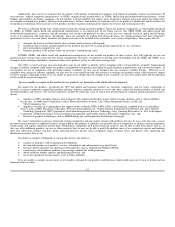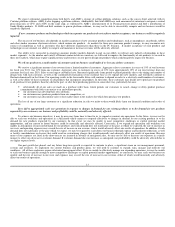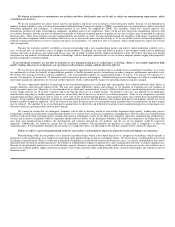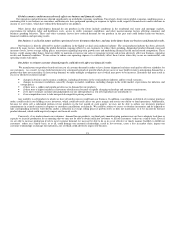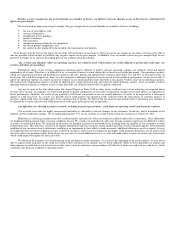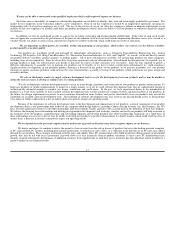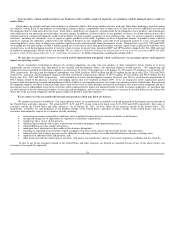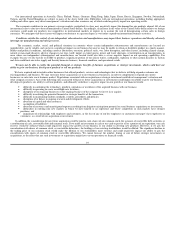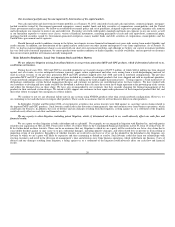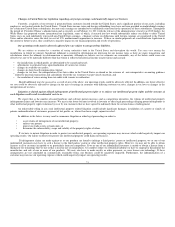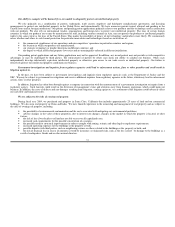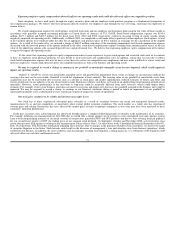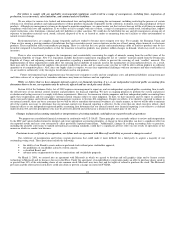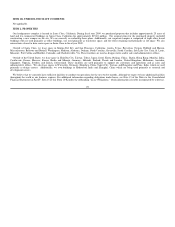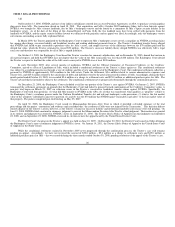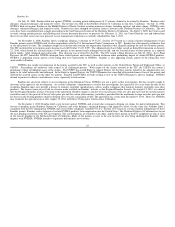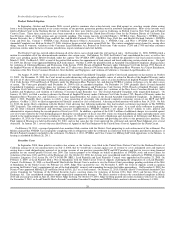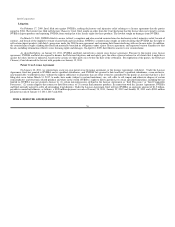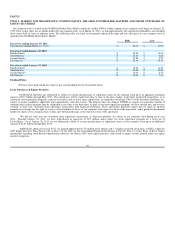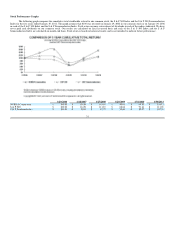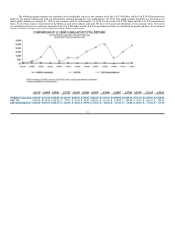NVIDIA 2011 Annual Report Download - page 24
Download and view the complete annual report
Please find page 24 of the 2011 NVIDIA annual report below. You can navigate through the pages in the report by either clicking on the pages listed below, or by using the keyword search tool below to find specific information within the annual report.
Our ability to compete will be harmed if we are unable to adequately protect our intellectual property.
We rely primarily on a combination of patents, trademarks, trade secrets, employee and third-party nondisclosure agreements, and licensing
arrangements to protect our intellectual property in the United States and internationally. We have numerous patents issued, allowed and pending in the
United States and in foreign jurisdictions. Our patents and pending patent applications primarily relate to our products and the technology used in connection
with our products. We also rely on international treaties, organizations and foreign laws to protect our intellectual property. The laws of certain foreign
countries in which our products are or may be manufactured or sold, including various countries in Asia, may not protect our products or intellectual property
rights to the same extent as the laws of the United States. This makes the possibility of piracy of our technology and products more likely. We continuously
assess whether and where to seek formal protection for particular innovations and technologies based on such factors as:
• the commercial significance of our operations and our competitors’ operations in particular countries and regions;
• the location in which our products are manufactured;
• our strategic technology or product directions in different countries; and
• the degree to which intellectual property laws exist and are meaningfully enforced in different jurisdictions.
Our pending patent applications and any future applications may not be approved. In addition, any issued patents may not provide us with competitive
advantages or may be challenged by third parties. The enforcement of patents by others may harm our ability to conduct our business. Others may
independently develop substantially equivalent intellectual property or otherwise gain access to our trade secrets or intellectual property. Our failure to
effectively protect our intellectual property could harm our business.
Government investigations and inquiries from regulatory agencies could lead to enforcement actions, fines or other penalties and could result in
litigation against us.
In the past, we have been subject to government investigations and inquiries from regulatory agencies such as the Department of Justice and the
SEC. We may be subject to government investigations and receive additional inquiries from regulatory agencies in the future, which may lead to enforcement
actions, fines or other penalties.
In addition, litigation has often been brought against a company in connection with the announcement of a government investigation or inquiry from a
regulatory agency. Such lawsuits could result in the diversion of management’s time and attention away from business operations, which could harm our
business. In addition, the costs of defense and any damages resulting from litigation, a ruling against us, or a settlement of the litigation could adversely affect
our cash flow and financial results.
We are subject to the risks of owning real property.
During fiscal year 2009, we purchased real property in Santa Clara, California that includes approximately 25 acres of land and ten commercial
buildings. We also own real property in China and India. We have limited experience in the ownership and management of real property and are subject to
the risks of owning real property, including:
• the possibility of environmental contamination and the costs associated with mitigating any environmental problems;
• adverse changes in the value of these properties, due to interest rate changes, changes in the market in which the property is located, or other
factors;
• the risk of loss if we decide to sell and are not able to recover all capitalized costs;
• increased cash commitments for the possible construction of a campus;
• the possible need for structural improvements in order to comply with zoning, seismic and other legal or regulatory requirements;
• increased operating expenses for the buildings or the property or both;
• possible disputes with third parties, such as neighboring owners or others, related to the buildings or the property or both; and
• the risk of financial loss in excess of amounts covered by insurance, or uninsured risks, such as the loss caused by damage to the buildings as a
result of earthquakes, floods and or other natural disasters.
22


